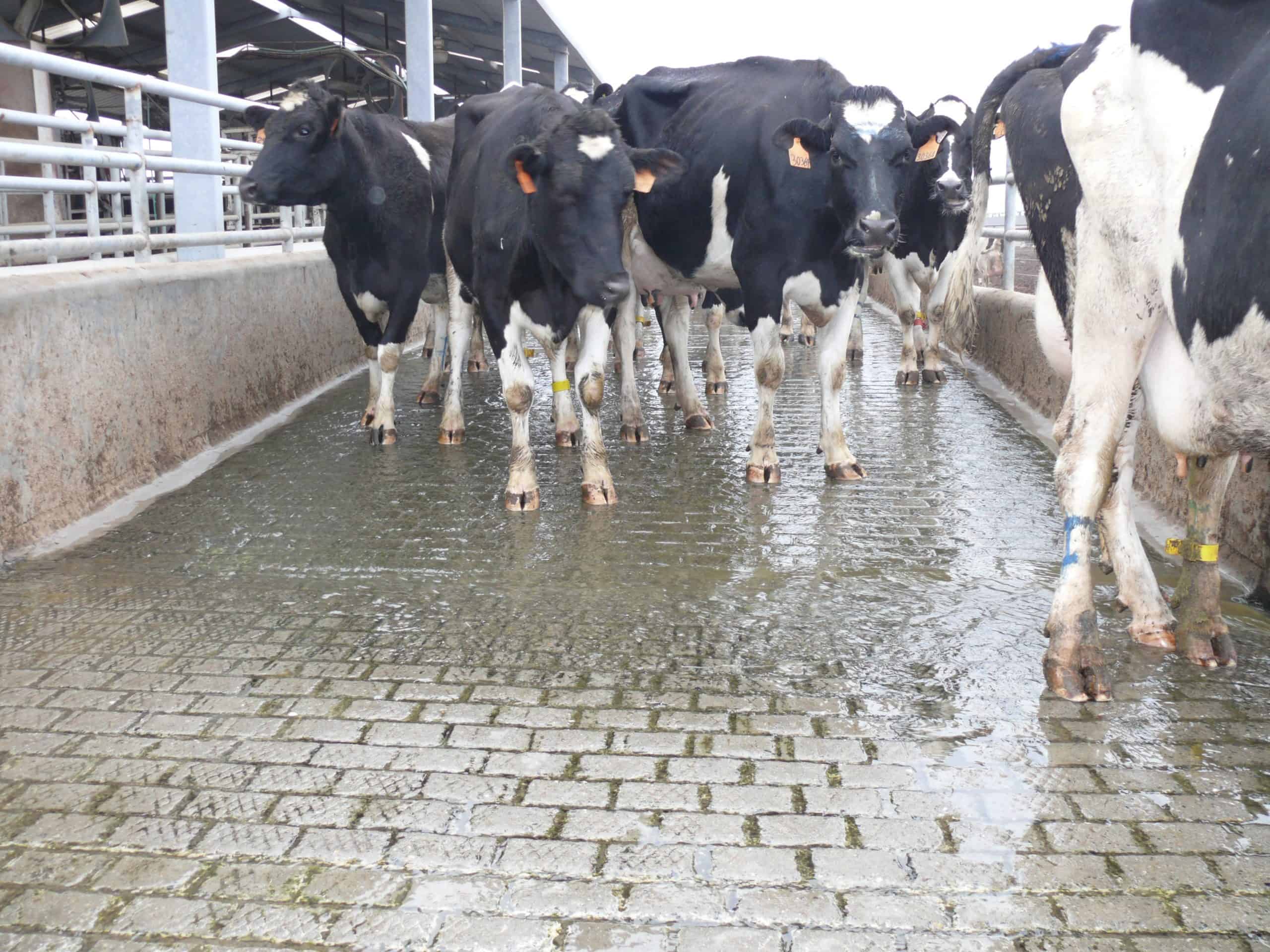
Footbaths are an essential part of your hoof care routine to prevent lameness and disease. It is important to use footbaths for the prevention AND treatment of hoof problems. Far too often, we see dairymen initiate a footbath routine only after an outbreak has occurred.
If implemented properly, a consistent footbath routine will be one of the best things you can do for your herd’s hoof health and your milk production. Here are the top 3 mistakes to avoid on your dairy.
1. Human Error
We all make mistakes, after all, we are only human. Often, we see different people running footbaths using inconsistent approaches. When different people are giving footbaths on different days, mistakes can be made. Even if the same person does the footbath routine, human error can and often does occur.
It’s important to mix the accurate amount of water to the proper concentrate to provide an effective and safe footbath for your herd. Always be consistent and carefully follow the label instructions. If too much footbath solution is used, it could be dangerous for your herd. If too much water is used, your footbath will not be strong enough to kill the bacteria.
If you’re looking for a better way to run a consistent footbath routine, consider a footbath dosing system. It automates your footbath program and provides the accurate amount of water and concentrate every single time.
If a footbath dosing system isn’t for you, please don’t allow an inexperienced employee run your footbaths! There is too much at stake. Always try to have an experienced staff member draw your footbaths. And while it isn’t ideal to have multiple people running your footbaths, you should train more than just one person; this way you’re always covered if someone’s sick or out of work.
2. Improper Footbath Size
It’s imperative to have the proper sized footbath for number of cows passing through. This will depend on the number of cows you have on your dairy and whether you are looking for a replenishing system or a conventional system. We have outlined the guidelines for both methods below:
Replenishing System:
Ideal for dairies over 1000+ cows
Size: Up to 8’ footbath works best
Sides should be 6-8” high
Benefits:
Replenishing systems reduce overall costs and use less product resulting in huge reductions in cost per cow pass and they are typically less expensive to run than using formaldehyde alone. In addition, manual labor demand is reduced it can be set up to turn on automatically.
Conventional System:
Good for approximately 200 cow passes before changing
Size: There is no one size solution for a conventional system.
Product/Water Level: Keep footbath depth 3 ½”-4”
3. Lack of consistency
Many times, we see dairymen only use footbaths as a treatment after the herd has been struck with digital dermatitis. Really, a footbath should be used as a preventative method to avoid any outbreaks.
On an average dairy farm, footbaths should be run a minimum of 3 days a week and more frequently if there are existing hygiene issues. If you use manure solids or reused solid beds; footbaths will be needed more frequently. The hot summer months will also require more footbaths as sprinklers (if used) create damp conditions and could lead to potential problems.
Footbaths will always be a critical part of your hygiene routine. While there is no one size fits all approach when it comes to your footbath routine, you will need to do what is best to maintain the health of your herd. If you don’t already have one, find yourself a qualified and experienced hoof trimmer; they’ll be your best line of defense to prevent disease and keep your herd as healthy and as comfortable as possible.